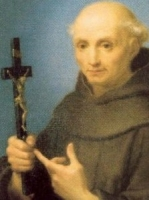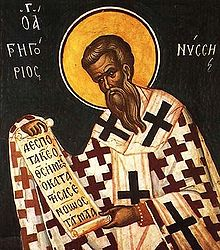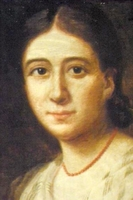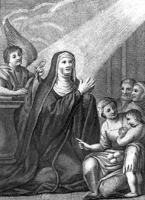St. Paulinus of Aquileia
அக்குய்லேயா நகர் பவுலினுஸ் Paulinus von Aquileja
பிறப்பு
750,
அக்குய்லேயா, இத்தாலி
இறப்பு
11 ஜனவரி 802,
இத்தாலி
இவர் மிகப் புகழ்வாய்ந்த இலக்கண ஆசிரியராக திகழ்ந்தார். அரசர் பெரிய சார்லஸிற்கு (Karl der Große) அனைத்து விதங்களிலும் உதவினார். அவரின் அரசவை சிறந்து, ஆட்சி செழிக்க வழிகாட்டினார். 776 ஆம் ஆண்டு பவுலினுஸ் தன் இருப்பிடத்தை ஆஹன் Aachen என்ற இடத்திற்கு மாற்றிக்கொண்டு, அவ்வூரிலிருந்த கல்லூரிகளில் கற்பித்தார். அச்சமயத்தில் அல்குயின் என்ற அரசருடன் தொடர்புக்கொண்டு, அவரின் நெருங்கிய நண்பரானார். பின்னர் அரசரின் குடும்பத்திலிருந்த அனைவருக்கும் கல்வியைக் கற்றுக்கொடுக்கும் பணியை ஏற்றார். பவுலினுஸ் சிறந்த கவிஞராகவும் திகழ்ந்தார்.
இவர் அரசரின் உதவியைக் கொண்டு திருச்சபைக்கு பல உதவிகளையும் செய்தார். தம் மறைமாவட்ட ஆயருடன் இணைந்து நற்செய்தியை பறைசாற்றினார். திருச்சபைக்கு எதிராக சதி செய்தவர்களிடம் சுமூகமான உறவு கொண்டு மனமாற்றினார். புனித பத்ரீஸியாரின் சபையில் சேர்ந்து, ஏழ்மையான வாழ்வை வாழ்ந்து, அச்சபையில் பல மாற்றங்களை கொண்டு வர உழைத்தார். தம் சபையை முன்னேற்ற இரவும் பகலும் அயராது உழைத்து தம் சபை சகோதரர்களை இதயத்தில் தாங்கினார்.
Feastday: January 11
Birth: 726
Death: 804
Born near Friuli, Italy, Paulinus in his youth worked on his family's farm. Years later, as a priest, he became a renowned grammar professor whose reputation reached the court of the Frankish emperor Charlemagne. It was through the intervention of Charlemagne that Paulinus was chosen archbishop of Aquileia in 787. Paulinus served in his see with great holiness. The famed scholar Alcuin begged Paulinus to pray for him at every Mass he celebrated. A zealous defender of the Church's teachings, Paulinus wrote a book to refute Adoptionism, a heresy which claimed that Christ as Son of Man was only the "adoptive" Son of God. At a synod convened by Paulinus at Cividale in 796, he reiterated the Church's Trinitarian teaching of the procession of the Holy Spirit from both the Father and the Son. Paulinus exhorted his clergy to celebrate the Mass and the other sacraments precisely as prescribed by the rubrics and texts of the Church. In a manual of spiritual advice that Paulinus composed for the duke of Friuli, he stresses the need of seeking to please God in all our actions.
Saint Paulinus II (c. 726 – 11 January 802 or 804 AD) was a priest, theologian, poet, and one of the most eminent scholars of the Carolingian Renaissance.[1] From 787 to his death, he was the Patriarch of Aquileia. He participated in a number of synods which opposed Spanish Adoptionism and promoted both reforms and the adoption of the Filioque into the Nicene Creed. In addition, Paulinus arranged for the peaceful Christianisation of the Avars and the alpine Slavs in the territory of the Aquileian patriarchate. For this, he is also known as the apostle of the Slovenes.
St. Palaemon
Feastday: January 11
Death: 325
An Egyptian hermit who is best known for serving as mentor to St. Pachomius. With Pachomius, he labored to organize the hermits of the Egyptian desert into cenobitic communities, thereby laying the groundwork for the subsequent development of monasticism. Palaemon died at Tabennisi, the vast monastic center that sheltered the early Desert Fathers.
St. Palæmon was an aged hermit in the deserts of Upper Egypt, when Pachomius, released from military service, and desiring to flee the world, came to him and desired to become his pupil. The old anchorite refused to receive him, because his manner of life was too severe for a youth. "I eat nothing but bread and salt," said he; "I never taste wine, and I watch half the night." Then, answered Pachomius, "I believe in Jesus Christ my Lord, who will give me strength and patience to assist thee in thy prayers to follow thy holy conversation.”
“Then Palæmon, beholding him with his spiritual eye, saw that he was a chosen vessel, and admitted him to be his disciple. So they lived together, serving the Lord in fasting and tears and prayer.
When the feast of Easter came, Pachomius, to honour the day of the Resurrection, prepared a dinner of herbs and oil, and set it before the master. But Palæmon, pressing his brow with his hands, exclaimed, "My Lord suffered on the Cross, and shall I taste oil?" So he refused it, and contented himself with bread and salt.
One evening, a solitary came into their cell, and asked to join them in prayer; then, filled with a spirit of presumption, he said, "If we are the true servants of God, let us say our prayers standing on live coals."
But Palæmon was wroth, and rebuked him for his pride.
However, the monk persisted, and by Satan's craft, he stood unhurt on the red-hot cinders. Then he retired to his own cell, puffed up with self-confidence. But pride goes before a fall, and shortly after he fell into fleshly lust; then, filled with shame, he crept back to the cave of Palæmon, and “and falling at his feet, with bitter tears, confessed his sin.”
When St. Pachomius was inspired to found a monastery at Tabenna, he announced his intention to S. Palæmon. The old man accompanied his pupil, and took up his abode at Tabenna, for he loved Pachomius as his own son, and he could not bear to be separated from him. Therefore he said, "Let us make a compact together, that we part not the one from the other, till God break our union."
And they never did break the union. Palaemon and Pachomius worked together to organize the hermits on cenobitical lines. Eventually, Palaemon followed Pachomius to Tabennisi, where the elderly saint died.
Saint Theodosius the Cenobiarch
புனிதர் தியோடசியஸ்
துறவி, மடாதிபதி, துறவிமடக் கொள்கைகளின் நிறுவனர் மற்றும் அமைப்பாளர்:
பிறப்பு: கி.பி. 423
கப்படோஸியா அருகேயுள்ள மொகாரிஸ்ஸஸ் எனும் கிராமம், தூய பாசில் பிராந்தியம்
இறப்பு: கி.பி. 529 (சுமார் 105 வயது)
ஜெருசலேம் அருகில்
ஏற்கும் சமயம்:
ரோமன் கத்தோலிக்க திருச்சபை
கிழக்கு மரபுவழி திருச்சபை
"செனோபியார்ச்" (Cenobiarch) எனும் துறவியர் மட தலைவரான தியோடசியஸ், ஒரு துறவியும் துறவு மடாதிபதியும் கிறிஸ்தவ புனிதரும் ஆவார். இவர், "செனோபைட்டிக்" (Cenobitic) எனப்படும் துறவு வாழ்வியல் முறைகளை நிறுவி அமைத்தவர் ஆவார்.
இவர், “தூய பாசில் பிராந்தியம்” (Saint Basil's province), “கப்படோஸியா” (Cappadocia) அருகேயுள்ள “மொகாரிஸ்ஸஸ்” ((Mogarissos) எனும் கிராமத்தில் மிகவும் பக்தி மார்க்கமான குடும்பத்தில் பிறந்தவர் ஆவார். இவரது தந்தை பெயர், "ப்ரோஹேரசியஸ்" (Proheresius) ஆகும். இவரது தாயார், "யூலோஜியா" (Eulogia) ஆவார். பின்னாளில், இவரது தாயார் யூலோஜியா, தமது மகன் தியோடசியசையே ஆன்மீக தந்தையாக ஏற்றுக்கொண்டு கிறிஸ்தவ பெண் துறவியாக மாறினார்.
துறவியர்களுக்குரிய தொடக்கங்கள்:
கிறிஸ்துவின் அன்புக்காக ஆபிரகாம் தமது பெற்றோர், நண்பர்கள், சொந்தங்கள் மற்றும் அனைத்தையும் விட்டுச் சென்றதைப்போல தாமும் செல்ல விரும்புவதாக தமது சிறு வயதிலேயே தியோடசியஸ் உணர்ந்தார். கி.பி. 451ம் ஆண்டு, "சல்செடன்" (Chalcedon) எனுமிடத்தில் புனித நான்காம் கிறிஸ்தவ பேரவை (Holy Fourth Ecumenical Council) நடந்த சமயத்தில் ஜெருசலேம் சென்று சேர்ந்தார்.
அந்தியோக்கியா (Antioch) சென்றடைந்ததும் புனிதர் சிமியோனை (Saint Symeon the Stylite) சந்தித்து அவரது செபம் மற்றும் ஆசீர் பெறுவதற்காக சென்றார். அவர் புனிதர் சிமியோனின் தூணருகே சென்றபோது, அதிசயிக்கத்தக்க விதமாக, தியோடசியஸின் பெயர் சொல்லி ஒரு அசரீரி அழைத்தது. வாழ்த்து கூறிய அந்த அசரீரி, அவரை நிரலை மேலேறி வரவேற்றது. தூணின் மீது ஏறிச் சென்ற தியோடசியஸ், புனிதர் சிமியோனைப் பணிந்து வணங்கினார். இவரை ஆரத்தழுவிய புனிதர் சிமியோன், இவருக்கு ஆசி வழங்கியதுடன், இவர் பெரும் ஆன்மீக மகிமை பெறுவார் என்றும் தீர்க்கதரிசனம் அறிவித்தார்.
ஜெருசலேம் அடைந்த தியோடசியஸ் புனித ஸ்தலங்களை சென்று தரிசித்தார். தனிமை வாழ்வினை ஆரம்பிக்கும் முன்னர் தமக்கென்று கட்டுப்பாடுகளை உருவாக்கி ஏற்றுக்கொள்ள வேண்டுமென எண்ணினார். “தாவீதின் கோபுரமருகே” (Tower of David) கிரேக்க தத்துவ ஞானியும், துறவி மடாதிபதியுமான "லோங்கினஸ்" (Longinus) என்பவரின் மேற்பார்வையில் துறவியர்களுக்குரிய உழைப்பினைத் தொடங்கினார்.
இக்கால கட்டத்தில், "இகேலியா" (Ikelia) என்ற பணக்கார மற்றும் ஆன்மீக பக்தியுள்ள ஒரு பெண், 'பழைய கதிஸ்மா' (The Old Kathisma) என்ற இடத்தில் ஒரு ஆலயத்தைக் கட்டி அதனை ("Theotokos" கிழக்கு மரபுவழி திருச்சபையில் இறைவனின் அன்னை தூய கன்னி மரியாளுக்கு வழங்கப்படும் பெயர்) அர்ப்பணித்தார். “இகேலியா”, தியோடசியஸ் இந்த இடத்திலேயே துறவு மடத்தினை அமைக்குமாறு "லோங்கினசை" (Longinus) வேண்டினார். அவரும் அதற்கு ஒப்புக்கொண்டார். சிறிது காலத்திலேயே எண்ணற்ற யாத்திரிகர்களை தியோடசியஸ் கவர்ந்தார்.
துறவி வாழ்க்கை:
தம்மைப் பாராட்டும் யாத்திரிகர்களிடமிருந்து விலகி மென்மேலும் இறைவனிடம் தம்மை அர்ப்பணிக்க விரும்பிய தியோடசியஸ் “பழைய கதிஸ்மாவை” (Old Kathisma) விட்டு விலகிச் சென்றார். ஒரு மலையின் உச்சியிலே உள்ள ஒரு குகையில் சென்று அமர்ந்தார். இந்த குகைக்கு ஒரு மிகப் பெரிய பாரம்பரியம் உண்டு. ஆண்டவர் இயேசு கிறிஸ்து பிறந்திருந்த வேளையில் விண்மீன் வழிகாட்ட இறைவனை தரிசிக்க வந்திருந்த ஞானிகள் மூவரும் கடவுளை தரிசித்ததன் பிறகு, இந்த மலைக்குகையிலேயே தங்கியிருந்ததாகவும், அதன் பிறகே ஒரு இறைதூதரின் அறிவுரைப்படி தத்தமது நாடுகளுக்கு வெவ்வேறு வழிகளில் சென்றதாகவும் பண்டைய திருச்சபை தந்தையர்கள் கூறுவர்.
குகையில் வசித்த காலத்தில் தியோடசியஸ் சந்நியாச வாழ்வின் பெரும் சாதனைகளைப் புரிந்தார். எந்நேரமும் ஜெபத்திலே மூழ்கியிருந்தார். இரவு நேரங்களில் கூட அவர் நின்றவாறே ஜெபம் செய்தார். அவர் எப்பொழுதும் பசியை உணரவேயில்லை. ஆனால் தாம் தமது தவ வாழ்விலிருந்து விலகும்படியாக நோயில் வீழ்ந்து விடாதிருக்கும் வகையில் போதுமான உணவு உட்கொண்டார். அவர் பேரீச்சம்பழம் மற்றும் “கரோப்” (Carob) எனப்படும் அரேபிய அரபு நாடுகளில் உற்பத்தியாகும் பழுப்பு-ஊதா நிற காய்களையும் ஊறவைத்த பருப்பு வகைகளையும் உண்டார். முப்பது வருடங்களுக்கும் மேலாக ரொட்டி வகைகளை ருசித்தும் பார்க்கவில்லை.
தியோடசியஸ் “பெத்தலகேம்” (Bethlehem) அருகே துறவியர்க்கான ஒரு சிறிய சமூகத்தினை அமைத்தார். பிற்காலத்தில் அது "தியோடசியஸ் துறவியர் மடம்" (Monastery of St. Theodosius) என்று அழைக்கப்பட்டது. இச்சமூகம் பல்வேறுதரப்பட்ட மொழிகள், கலாச்சாரம் மற்றும் பல்வேறு நாடுகளைச் சேர்ந்த துறவியர்களுடன் வேகமாக வளர்ந்தது. நோயாளிகள்,முதியோர் மற்றும் மன நலம் குன்றியோர்களை கவனித்து சேவை செய்வதில் இச்சமூகம் புகழ் பெற்றது.
தியோடஸியஸின் நண்பரும் நாட்டுப்புற வாசியுமான "சப்பாஸ்" (Sabbas) இவருடன் இணைந்தபோது, அவர் மடாதிபதியாக (Archimandrite) நியமனம் செய்யப்பட்டார். பாலஸ்தீனத்தில் (Palestine) தனிமைப்படுத்தப்பட்டிருந்த துறவியர் அனைவரும் “குலபதி” (Patriarch) “சலூஸ்டியஸ்” (Salustius of Jerusalem) என்பவரால் ஒன்றிணைக்கப்பட்டனர். இச்சமூகத்தில் இருந்த அனைத்து துறவியர்களினதும் தலைமைப் பொறுப்பினை தியோடசியஸ் ஏற்றார். இதுவே (The Cenobiarch) எனப்படும் துறவு வாழ்வியல் முறைகளின் தொடக்கமாகும்.
தியோடசியஸ், (Monophysitism) என்ற கிறிஸ்தவயியலை தீவிரமாக எதிர்த்தார். இதன் காரணமாக, பேரரசன் "அனஸ்டாசியஸ்" (Emperor Anastasius) இவரை சில காலம் தற்காலிகமாக துறவு மடத்திலிருந்து விலக்கி வைத்தார்.
தியோடசியஸ் ஜெருசலேம் அருகே சுமார் 105 வயதில் மரணமடைந்தார்.
Also known as
• Theodosius of Cappadocia
• Theodosius the Coenobriarch
• Theodosius the Great
• Theodosios, Theodossios
Profile
Born to a pious family, he began his studies at an early age, and became a lector while still a youth. The example of Abraham led him to leave home in order to properly follow God. He met Saint Simeon Stylites in Antioch; Simeon recognized him as a holy man and leader, and invited Theodosius onto his pillar for prayer, blessing, and advice. Travelled to Jerusalem where legend says worked with Saint Longinus the Centurian, who would have been nearly 500 years old at the time. Head of a church near Bethlehem.
Hermit in the desert of Judah, living in a cave. Word of his holiness began to attract disciples, and Theodosius built a monastery at Cathismus to house them. There were so many there had to be a section for Greeks, for Armenians, for Persions, etc., but they all happily worked and prayed together. Next to the monastery he built a hospital for the sick, a hospice for the aged, and a mental hospital. Friend of and co-worker with Saint Sabbas. Appointed visitor to all cenobitical communities of Palestine the patriarch of Jerusalem.
Opposed heresies, including Eutychianism and Monophysitism. Emperor Anastatius, a supporter of Eutychianism, sent Theodosius a large bribe, hoping to sway the influential monk to his thinking; Theodosius distributed the money to the poor, and continued to preach against heresy. Because of his orthodox views, Anastatius removed him from his position in 513, but he soon resumed his duties under emperor Justinian.
In poor health in his old age, he was stricken with a condition that made his skin dry as stone. He continued to work until his health gave out, and then he spent his time praying for his community. He died at age 105.
Born
423 at Garissus, Cappadocia (modern Turkey)
Died
• 529 at Cathismus of natural causes
• buried in the cave where he live as a hermit
• it became a noted site for pilgrimages and miracles
Saint Tommaso da Cori
Also known as
• Francesco Antonio Placidi
• Tommaso da Cori
• Thomas of Cori
Profile
Spent his youth as a shepherd. Studied philosophy and theology in Viterbo, Italy. Joined the Observant Franciscans in 1675. Parish priest, assigned to Civitella, Italy. Known for his simple life, his strict observance of the Franciscan way, and his gifts of healing. His preaching, confessions and spiritual retreats, incarnated the evangelical counsel of the total gift of self to God and his fellow men.
Born
4 June 1655 in Cori, Latina, Italy as Francesco Antonio Placidi
Died
11 January 1729 at Bellegra, Rome, Italy of natural causes
Canonized
21 November 1999 by Pope John Paul II
Saint Vitalis of Gaza
Profile
Monk and hermit in the Gaza region. At age 60 he felt driven to travel to Alexandria, Egypt and work to save the area prostitutes. He had a unique method - he worked as a day labourer; with each day's wages he would hire a prostitute for the evening; but instead of the usual services, he requested that she spend the night without sin. To those who would listen he would teach and pray, and from each he extracted a promise to not describe the evening. Not surprisingly, this frequently led to controversy, gossip and opposition, but every investigation cleared him of any charge of impropriety. Some writers claim that he met and prayed with every prostitute in the city, and many of them were led to abandon the life and overcome the things that had driven them to it.
Died
• he was struck in the head in 625 with a knife by a pimp who saw him leaving a brothel and wanted Vitalis to quit interfering with business in Alexandria, Egypt
• Vitalis managed to return to his hut and died alone soon after, apparently in prayer
Blessed Franciszek Rogaczewski
Also known as
• Francesco Rogaczewski
• Francis Rogaczewski
• Frans Rogaczewski
Additional Memorial
12 June as one of the 108 Martyrs of World War II
Profile
Ordained in Gdansk, Poland in 1918. Pastor of Christ the King parish in Gdansk where be became a sought after confessor. Arrested on 1 September 1939 by Nazi invaders for the crime being a priest. Imprisoned and tortured for months before finally being executed. Martyr.
Born
23 December 1892 in Lipinkach, Kujawsko-Pomorskie, Poland
Died
shot on 11 January 1940 near Gdansk, Poland
Beatified
13 June 1999 by Pope John Paul II
Blessed William Carter
Additional Memorial
22 November as one of the Martyrs of England, Scotland, and Wales
Profile
Married layman. Apprentice to several Catholic printers. Imprisoned and tortured for 18 months for "printing lewd (i.e., Catholic) pamphlets," possessing books upholding Catholicism, hiding vestments and other equipment in his home. His wife died while he was in jail. Eventually charged with printing and publishing the Treatise of Schisme, which allegedly incited violence by Catholics and which was said to have been written by a traitor and addressed to traitors; the jury debated 15 minutes before returning a guilty verdict. Martyr.
Born
c.1549 at London, England
Died
hanged, drawn, and quartered on 11 January 1584 at Tyburn, London, England
Beatified
22 November 1987 by Pope John Paul II
Blessed Anna Maria Janer Anglarill
Profile
Studied at the Real Colegio de Educandras. Worked as a nurse in the Castelltort Hospital. Director the House of Charity and cared for orphans, young people and the elderly. Teacher. Established a hospital for the poor. Founded the Institute of Sisters of the Holy Family of Urgell on 29 June 1859. Today the Institute works in Spain, Andorra, Italy, Argentina, Paraguay, Uruguay, Chile, Colombia, Mexico, Peru and Equatorial Guinea; the Sisters work in schools, hospitals and nursing homes, missions, parishes and other apostolates.
Born
18 December 1800 in Cervera, Lleida, Spain
Died
11 January 1885 in Talarn, Lleida, Spain
Beatified
8 October 2011 by Pope Benedict XVI
Saint Michael of Klopsk
Also known as
• Michael of Clopas
• Michel de Klops
• Michael van Klopsk
• Michael of Klops
• Mikhail of Klopsk
Profile
He was a monk who suddenly showed up at the Klopsk Abbey near Novgorod, Russia and who would no speak to anyone or answer any questions. The abbot gave him a cell and Michael sometimes slept there, sometimes in the fields, some times just stayed in church reading his Bible by candle light and praying all night. He was eventually found out as a member of the royal family, a cousin of Prince Constantin Dimietrievitch of Moscow, who had given up the worldly life to become a "fool for Christ".
Died
• 11 January 1453 of natural causes
• relics hidden in the Klopsk Abbey
Canonized
1547 (feast established)
Pope Saint Hyginus
புனிதர் ஹைஜினஸ்
9ம் திருத்தந்தை:
பிறப்பு: கி.பி. 74
ஏதென்ஸ், கிரேக்க நாடு, ரோமப் பேரரசு
இறப்பு: கி.பி. 140
ரோம், ரோமப் பேரரசு
நினைவுத் திருநாள்: ஜனவரி 11
பிறப்பால் கிரேக்க நாட்டைச் சேர்ந்த ஹைஜினஸ், ரோம் ஆயரும் கத்தோலிக்க திருச்சபையின் ஒன்பதாம் திருத்தந்தையும் ஆவார். இவர் ஒரு புனிதராகவும் போற்றப் பெறுகிறார். இவர் கி.பி. 136ம் ஆண்டு முதல் கி.பி. 140ம் ஆண்டுவரை ஆட்சி செய்தார் என்று வத்திக்கானில் இருந்து வெளியாகின்ற "திருத்தந்தை ஆண்டுக் குறிப்பேடு" (Annuario Pontificio) என்னும் அதிகாரப்பூர்வ நூலின் கி.பி. 2008ம் ஆண்டுப் பதிப்பு கூறுகிறது. ரோம் நகரில் மன்னர் ஹேட்ரியன் என்பவருக்கு நினைவுக் கூடம் (Castel Sant'Angelo) எழுப்பப்பட்ட காலத்தில் இவர் திருத்தந்தையாக இருந்தார்.
"ஹைஜினஸ்" என்னும் பெயர் கிரேக்கத்தில் "நலமானவர்" என்னும் பொருள்தரும். இவர், ரோமப் பேரரசன் "மார்க்கஸ் ஒரேலியஸ்" (Roman Emperor Marcus Aurelius) என்பவரின் காலத்தில் கிறிஸ்தவ துன்புறுத்தல்களால் மறை சாட்சியாக கொல்லப்பட்டார் என்றும் கூறப்படுவதுண்டு. ஆனால், அதற்கான ஆதாரங்கள் எங்கும் காணப்படவில்லை.
வாழ்க்கைக் குறிப்புகள்:
திருத்தந்தை ஹைஜினஸ் கிரேக்க நாட்டில் ஏதென்ஸ் நகரில் பிறந்தார் எனத் தெரிகிறது. இவர் ஒரு மெய்யியல் வல்லுநராக அல்லது மெய்யியல் வல்லுநர் ஒருவரின் மகனாக இருந்தார். "திருத்தந்தையர் நூல்" (Liber Pontificalis) என்னும் பண்டைய ஏட்டின்படி, ஹைஜினஸ் குருப்பட்டத்தின் படிகளான "கீழ்நிலைப் படிகள்" (Minor Orders) என்னும் சடங்குகளை ஏற்படுத்தினார். அதுபோலவே திருத்தொண்டர், துணைத் திருத்தொண்டர் என்னும் பட்டங்களை ஏற்படுத்தி அவற்றைக் குருத்துவப் பட்டத்திலிருந்து வேறுபடுத்தினார்.
இவர் ஆட்சிக்காலத்தில் "ஞானக் கொள்கை" (Gnosticism) என்னும் கோட்பாடு, “வாலண்டினஸ்” (Valentinus) மற்றும் “செர்டோ” (Cerdo) என்பவர்களால் ரோமில் பரவியது என்றும் பண்டைக்கால கிறிஸ்தவ அறிஞர் புனிதர் “இரனேயஸ்” (Irenaeus) குறிப்பிடுகிறார். “செர்டோ” தன் தவற்றை ஏற்று மனம் திரும்பினார் என்றும், பின்னர் மீண்டும் தவறான கொள்கைகளைப் பரப்பியதால் சபை விலக்கம் செய்யப்பட்டார் என்றும் புனிதர் “இரனேயஸ்” கூறுகிறார். பண்டைய மரபுப்படி, திருத்தந்தை ஹைஜினஸ், அந்தொனீனோ பீயோ என்னும் மன்னரின் காலத்தில் கிறிஸ்தவ விசுவாசத்தின் பொருட்டு கொல்லப்பட்டு மறைச்சாட்சியாக உயிர் நீத்தார். வத்திக்கானில் புனிதர் பேதுருவின் கல்லறை அருகில் இவர் அடக்கம் செய்யப்பட்டார்.
பணிகள்:
திருமுழுக்குப் பெறுவோரின் ஆன்ம நலனைக் காக்கும் பொறுப்பை ஆற்றிட ஞானப் பெற்றோர் அச்சடங்கில் கலந்துகொள்வர் என்னும் பழக்கத்தை இவர் தொடங்கி வைத்தார்.
இவருடைய நினைவுத் திருநாள் ஜனவரி 11ம் நாள் கொண்டாடப்படுகிறது. இவர் எழுதியதாகக் கருதப்படும் மூன்று கடிதங்கள் இன்றளவும் பேணிக் காக்கப்படுகின்றன.
Also known as
Hygin, Igino
Profile
Pope during a period of relative peace with no official persecutions of the early Church, but was forced to deal with with a series of heretic sects and preachers regularly popping up.
Born
Athens, Greece
Papal Ascension
c.138
Died
• 142 in Rome, Italy
• often listed as a martyr since so many of the early popes were, but there is no evidence of it for Hyginus
• buried on Vatican Hill near the tomb of Saint Peter the Apostle
Saint Anastasius of Suppentonia
Also known as
• Anastasius of Castel Sant'Elia
• Anastasius X
Profile
Benedictine monk at Suppentonia (modern Castel Sant'Elia), diocese of Nepi, Italy. Abbot at Suppentonia. Pope Saint Gregory the Great wrote that an angel appeared to summon Anastasius and his monks, all of whom died in rapid succession within the next eight days.
Died
570 at Suppentonia, Italy of natural causes
Patronage
Castel Saint'Elia, Italy
Saint Salvius of Amiens
Also known as
Salin, Salinius, Salve, Salvinus, Sauflieu, Saulve, Sauve, Sauvre
Profile
Hermit. Bishop of Amiens, France. Reported miracle worker.
Died
c.625
Representation
• bishop with a casket of relics of Saint Firminus of Amiens
• preaching to his people from the pulpit
• finding the body of Saint Firminus of Amiens
• in the procession translating Saint Firminus of Amiens‘s relics
Saint Peter Balsam
Also known as
• Peter Apselamus
• Peter Balsamus
• Pietro Apselamo
Profile
Arrested for his faith in the persecutions of Maximinus. Tried by Severus, governor of Eleutheropolis; the transcript of their dialogue was famous in early Christian literature. Martyr.
Born
Palestine
Died
crucified in 311
Saint Eithne
Also known as
Ethenea, Ethenia, Ethna, Ethnea
Profile
Daughter of King Leoghaire of Ireland; sister of Saint Fedelemia. She and her sister met Saint Patrick near the fountain of Clebach, received instruction in Christianity, were baptized, received their First Communion, and died in an ecstasy of love. An ancient church was built over her grave.
Died
• c.433
• relics in the cathedral of Armagh, Ireland
Saint Fedelemia
Also known as
Fedelma, Fidelmia
Profile
Daughter of King Leoghaire of Ireland; sister of Saint Eithne. She and her sister met Saint Patrick near the fountain of Clebach, received instruction in Christianity, were baptized, received their First Communion, and died in an ecstasy of love. An ancient church was built over her grave.
Died
• c.433
• relics in the cathedral of Armagh, Ireland
Saint Leucius of Brindisi
Also known as
Leucio
Profile
Missionary from Alexandria, Egypt. First bishop of Brindisi, Italy.
Born
Egyptian
Died
180 of natural causes
Patronage
Atessa, Italy
Saint Tipasio of Tigava
Also known as
Typasius
Profile
Veteran soldier. During the persecutions of Diocletian, all soldiers were ordered to sacrifice to pagan idols; Tipasio refused. Martyr.
Born
Tigava, Mauretania Caesariensis (modern El Kherba, Algeria)
Died
beheaded on 11 January 304
Saint Speciosa of Pavia
Additional Memorial
18 June (translation of relics)
Profile
Fifth century nun in Pavia, Lombardy, Italy.
Died
buried in the Basilica of San Vincenzo, Pavia, Italy
Representation
• lily
• three lilies
• with Bishop Epiphanius of Pavia
Saint Honorata of Pavia
Profile
Sister of Saint Epiphanius of Pavia and Saint Liberata of Pavia. Nun at Pavia, Lombardy, Italy. Captured by King Odoacer of the Germanic Heruli, she was eventually ransomed back by Saint Epiphanius, and returned to Pavia.
Died
c.500 of natural causes
Saint Luminosa of Pavia
Profile
Fifth century nun in Pavia, Lombardy, Italy.
Died
buried in the Basilica of San Vincenzo, Pavia, Italy
Representation
• lily
• three lilies
• with Bishop Epiphanius of Pavia
Patronage
book sellers
Saint Liberata of Pavia
Profile
Fifth century nun in Pavia, Lombardy, Italy.
Died
buried in the Basilica of San Vincenzo, Pavia, Italy
Representation
• lily
• three lilies
• with Bishop Epiphanius of Pavia
Saint Alexander of Fermo
Also known as
Alessandro
Profile
Bishop of Fermo, Italy. Martyred in the persecutions of Decius.
Born
in Fermo, Italy
Died
• c.250 in Fermo, Italy
• relics enshrined in the cathedral at Fermo, Italy
Saint Breandan
Also known as
Beandan, Brandan, Bran
Profile
Monk. Migrated from Ireland to Britain. Persecuted by Pelagian heretics, he sought refuge in a monastery in Gaul. It became his new home, and he eventually became abbot of the house.
Born
5th century Irish
Saint Paldo
Profile
Brother of Saint Tato and Saint Taso. Benedictine monk at Farfa, Sabina, Italy. The three brothers founded the monastery of San Vincenzo on the Voltorno river. First abbot of the house.
Born
in Benevento, Italy
Died
c.720 of natural causes
Saint Taso
Profile
Brother of Saint Paldo and Saint Tato. Benedictine monk at Farfa, Sabina, Italy. The three brothers founded the monastery of San Vincenzo on the Voltorno river. Second abbot of the house.
Born
in Benevento, Italy
Died
c.729 of natural causes
Saint Tato
Profile
Brother of Saint Paldo and Saint Taso. Benedictine monk at Farfa, Sabina, Italy. The three brothers founded the monastery of San Vincenzo on the Voltorno river. Third abbot of the house.
Born
in Benevento, Italy
Died
c.739 of natural causes
Saint Theodosius the Soldier
Profile
One of a group of fifty Christian soldiers martyred as a group during the persecutions of Emperor Claudius II Gothicus.
Died
martyred in 269 in Rome, Italy
Saint Lucius the Soldier
Profile
One of a group of fifty Christian soldiers martyred as a group during the persecutions of Emperor Claudius II Gothicus.
Died
martyred in 269 in Rome, Italy
Saint Peter the Soldier
Profile
One of a group of fifty Christian soldiers martyred as a group during the persecutions of Emperor Claudius II Gothicus.
Died
martyred in 269 in Rome, Italy
Saint Mark the Soldier
Profile
One of a group of fifty Christian soldiers martyred as a group during the persecutions of Emperor Claudius II Gothicus.
Died
martyred in 269 in Rome, Italy
Saint Theodosius of Antioch
Profile
Monk. Founded a monastery in Cilicia (modern Çukurova, Turkey).
Born
in Antioch (in modern Turkey)
Died
412
Saint Leucius of Alexandria
Profile
Martyred for publicling proclaiming the faith.
Born
Egyptian
Died
martyred c.309 in Alexandria, Egypt
Saint Severus of Alexandria
Profile
Martyred for publicling proclaiming the faith.
Born
Egyptian
Died
martyred c.309 in Alexandria, Egypt
Saint Peter of Alexandria
Profile
Martyred for publicly proclaiming the faith.
Born
Egyptian
Died
martyred c.309 in Alexandria, Egypt
Saint Suibhne of Iona
Also known as
Sweeney
Profile
Monk. Abbot of Iona Abbey for about three years.
Died
656 of natural causes
Saint Boadin
Profile
Benedictine monk, taking the cowl in France. Noted for strict observance of the Benedictine Rule, and for his gentle kindness.
Born
Irish
Saint Salvius of North Africa
Profile
Martyred in Roman North Africa. Saint Augustine of Hippo preached about him.
Saint Peter of Anea
Profile
Martyr.
Died
burned alive at Eleutheropolis, Asia Minor, date unknown








































